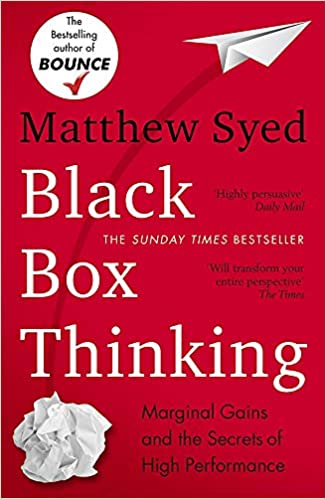
Matthew Syed’s book, Black-Box Thinking, is well-written with a wide variety of case studies and real-world examples. He clearly demonstrates that organisations and sectors that create an environment which learns from failure, drive marginal gains and high performance. Organisations which hide failure by passing blame or explaining away unappealing analysis, get what they deserve – ongoing failure.
At the start of the book, Syed uses the example of the aviation sector as an area in which failures are openly and thoroughly analysed, avoiding the apportionment of blame, even when the cause seems obvious. The results of this approach can clearly be seen in this sector. He contrasts this sector with the field of medicine, where all too often accidents are explained away as “one of those things – accidents happen”. Underlying causes are not identified and addressed.
What came across clearly from the book is that many organisations lose the opportunity to learn from failures by seeking a scapegoat or by holding to a favourite but unproven narrative about their organisation despite it not aligning with objective results and analysis. Unsurprisingly these organisations hide problems, under report errors and in the end they see little tangible improvement.
I have experienced a number of organisations where a failure or even the whiff of a failure encourages those close to the problem to arm themselves with the necessary arguments to go on the offensive and add to the body count. This can happen even when the problem can still be averted, albeit that that requires some co-operative team working, which does not come naturally in those types of organisations.
It seems to me that the challenge for leaders is to create an organisation in which:
- Failures or mistakes are accepted and are seen as opportunities to learn not times to find a scapegoat.
- Facts and those who created them are valued rather than verbally adept story-tellers.
- Time is taken to understand the real causes of a failure – this may require real patience when a compelling explanation could easily be created without reference to any analysis.
This approach will require leaders to set aside their own inclinations for making snap and intuitive judgments and to be comfortable living in the detail, when necessary, to bring about real understanding.
Andrew Kearns
Hartswood Management Ltd
Removing the roadblocks to delivering real improvement